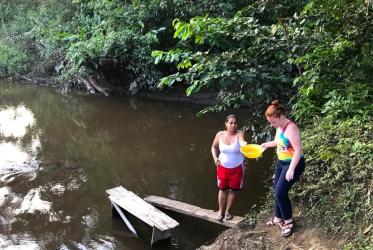Evangelisch-Methodistische Kirche von Argentinien
(Iglesia Evangelica Metodista Argentina, IEMA)
In 1825 the Missionary Society of the Methodist Episcopal Church in New York proposed the establishment of a mission in South America. In 1836 the general conference recommended that work be started in Buenos Aires and Rio de Janeiro. The mission in Buenos Aires flourished and soon a church building was put up. Until 1867 it was forbidden by local regulations to preach the gospel in Spanish. Once the prohibition was withdrawn, the work of the Methodist Church, followed in course of time by other denominations, spread throughout the country. The missionary thrust went beyond the borders, and centres were opened in Peru, Bolivia, Paraguay, Uruguay and Southern Brazil. All these were later organized into the South American annual conference. In 1884 the first secondary school was established in cooperation with the Waldensian Church. It became the nucleus of the first seminary which developed into the evangelical faculty of theology; by merger with the Lutheran seminary it became the Evangelical Institute for Higher Theological Studies (ISEDET). Social work in various forms was undertaken.
The work in Uruguay was organized separately from the River Plate annual conference. The work in Argentina continued with two conferences: one took the name of Argentina annual conference; the other, created a few years later, became the provisional annual conference of Patagonia. Both became a part of the Evangelical Methodist Church of Argentina in 1969.
This small church is recognized for its ecumenical spirit and social awareness. It has several educational centres and shares with seven other churches one of the best theological institutions of the continent. High on its agenda are evangelization and church growth, and the struggle for social justice and human rights. For these the development of a qualified leadership of lay persons has become a prerequisite. Social and missionary work is undertaken among the indigenous population - in the north with the Tobas and in the south with the Mapuches. Nursery services in Christian communities in various regions of the country are also built up. The church maintains strong relationships with Methodist churches throughout Latin America, in Europe and North America.
More recent challenges have been: to care for a population that is getting poorer; to review the ministerial model, giving a more important role to the laity; to search for new models at the institutional level which give visibility to the movement; the new spirituality and the role of the impoverished social classes.




